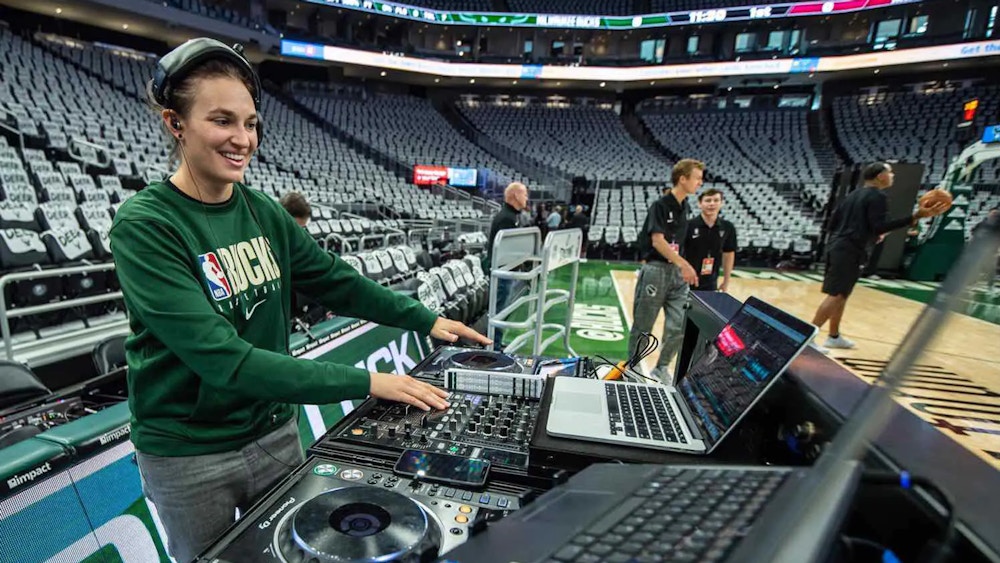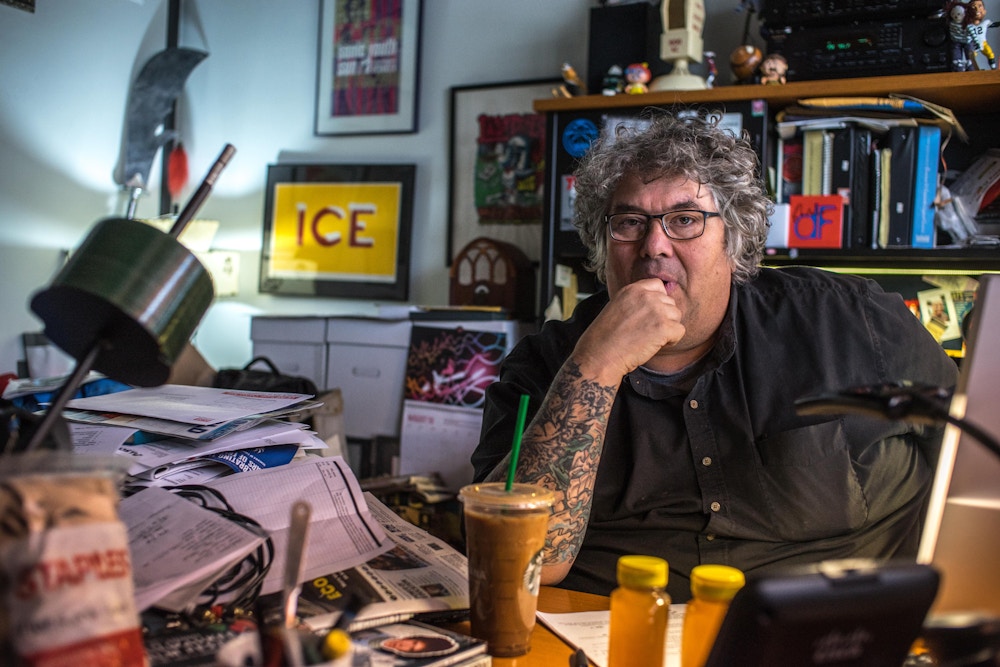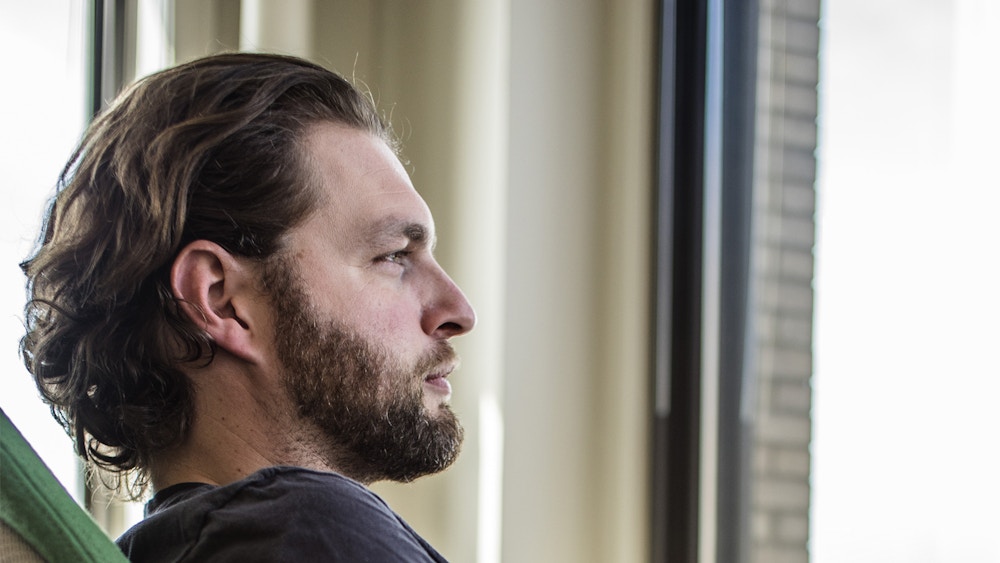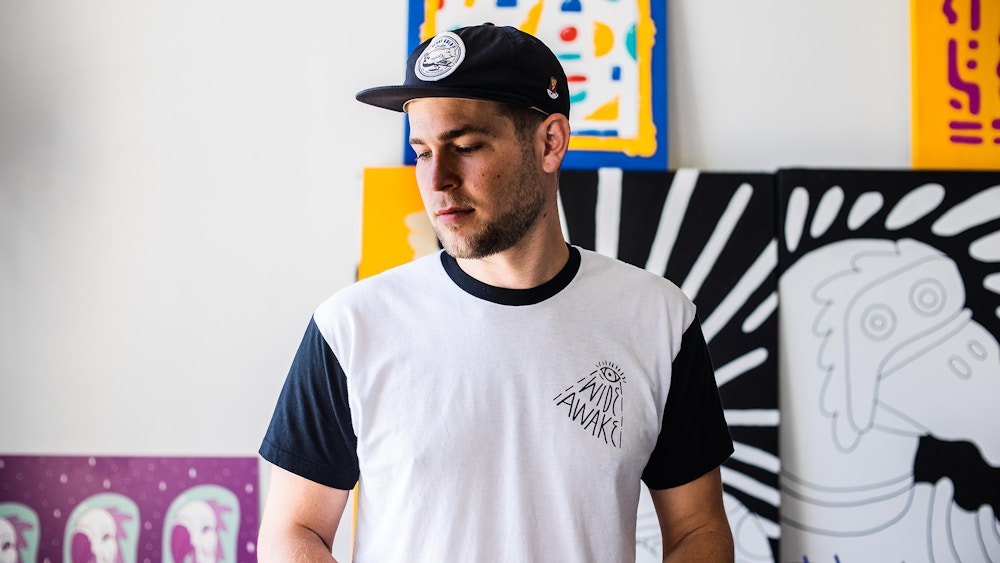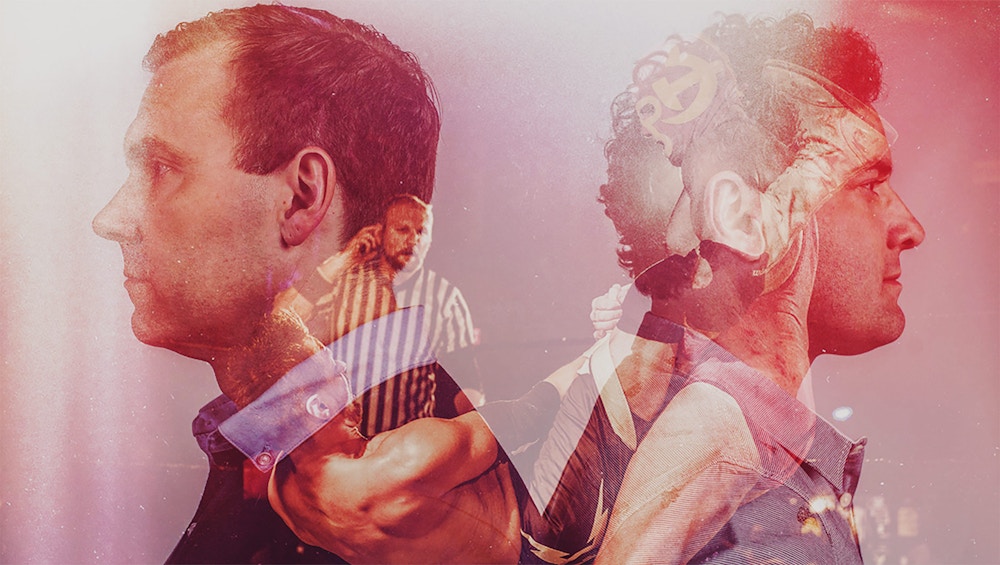

The Fine Line Between Passion and Creative Survival With Nat & Steve Sorrentino
Share on:
On the surface, Nat and Steve Sorrentino come across as high-functioning creatives who are the type of intelligent, attractive, and charismatic people who can glide above the typical pitfalls of life as an artist. To some extent, there is some truth to this—both are self-making entrepreneurs who have made a mark in the community.
After spending some time with the two of them, I learned that the real story is much more complicated. Each has had their moments of doubt, creative exhaustion, and existential frustration.
They have walked the balancing act between authentic self-expression and what it means to survive and thrive as creatives in today’s society. Their relationship to their art is deeply personal yet must be commodified to some extent to pay the bills and keep the lights on.
This paradox is deeply relatable. When asking them about our society commodifying art, I had conceptualized it as exclusively a bad thing. In truth, there is something deeply perverse about the need to sell oneself in order to survive as an artist. But I left the conversation with mixed emotions on the subject—realizing that some of my idealistic notions of self-expression and creativity over the push and pull of societal demands are perhaps more compromised than I had liked to admit.
I write because it is a deep passion of mine. Yet, until coming across a paid opportunity through Commonstate, I had largely let creative writing fall by the wayside (if this isn’t a call to action to finally pull the trigger and sign up for that Commonstate subscription, I don’t know what is). So if I’m being honest with myself, I’m only writing because I have commodified my work.
This doesn’t mean it’s the way it should be, but it shouldn’t be much of a surprise. The United States' funding level for arts is abysmal in comparison to other nations. As grim as the funding for arts is from the national perspective, Nat, Steve, and my home state of Wisconsin’s funding is even dourer—ranking dead last of the 50 states in the country.
While I often have the head of a cynic, I am an optimist at heart. I think this failure to appreciate art comes from a fundamental misunderstanding of what art is. When people think of art, they often think of a snob with a pencil mustache and wine-stained teeth, hailing the great sense of mise-en-scène of the artist who put a half-eaten apple on a pedestal.
But this is a distorted view of what art actually is. Sometimes the more valuable reflection isn’t asking what is art but what isn’t art.
Nat and Steve exemplify what the good side of art is, and I think those that read this story will walk away from it with a more hopeful perspective on art, the people who make it, and the spaces it occupies in our lives and communities.
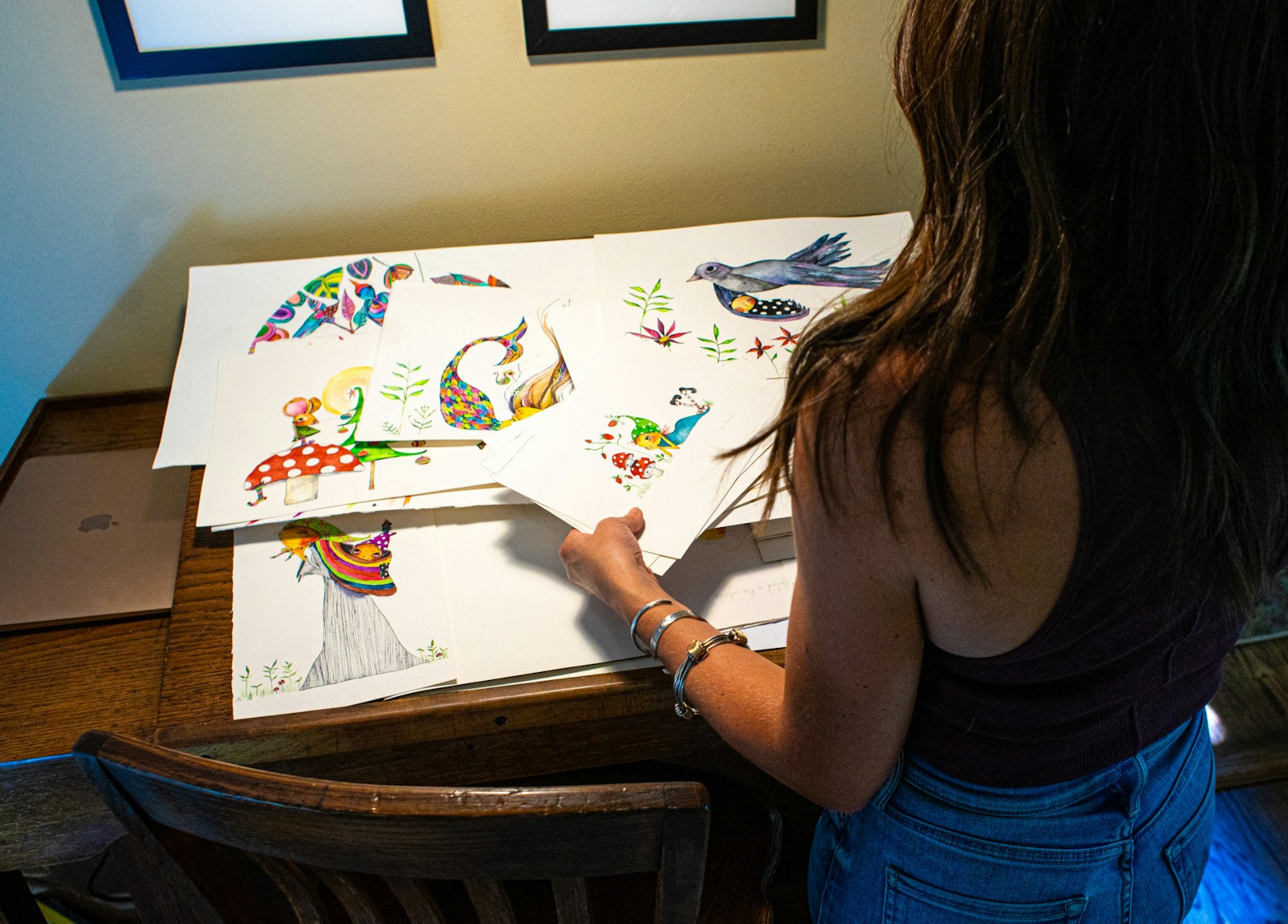
The Gnat & The Thunderbird
These days, the Sorrentinos are in full gear as the owners and proprietors of two LLCs. Together, they co-own and operate the aptly named Sorrentino Studios, where Steve and Nat collaborate, using their creative thinking to build brands and support businesses to engage new markets and audiences.
As if running one business isn’t enough, Nat uses her creative passion for good, working as an art therapist.
In her art therapy, she blends art and psychology—who many may view as disparate practices—for an artistic practice in which form follows function, but that function isn’t a physical one.
Nat’s art therapy practice has utilized a variety of mixed media ranging from traditional art mediums, to origami, and food. The form of the art therapy is tailored to meet the individual and cultural needs of the people she works with.
Nat has applied her uniquely crafted practice in a variety of settings, including leading art groups whether they take place in classrooms, hospitals, senior facilities, or psychiatric settings.
Beyond her work as an art therapist, Nat also works as the Gnat—where she brings her whimsical approach to a unique blend of art and togetherness to a range of watercolor illustrations and heartfelt greeting cards, Nat has seen the profound impact that using art to turn everyday experiences into meaningful moments has upon people.
In tandem with sharing the responsibilities of Sorrentino Studios, Steve owns and operates Thunderbird Creative—his own branding operation. Steve explains, “Now Nat and I are two crazy creatives with two LLCs, and we're doing the full-tilt entrepreneurial thing.”
However, the road traveled to get to their place of self-starting entrepreneurialism often traversed through—often unforeseen—trials and tribulations.
From the Literal Basement of Corporate America
The Sorrentino's professional story starts in a chapter many of us have read before — the basements of corporate America, a place where I, too, have lurked. I worked at Bon Ton Inc.—the parent company of Boston Store—until the executives drove the company into the basement, aka bankruptcy and liquidation (don’t worry the execs gave themselves million-dollar severance packages for their accomplishments). Still optimistic about my future in the corporate world, I took a job at Wacker Neuson, an international construction equipment corporation. As I worked there, I felt my life force drain from me by the minute. It was like there was an existential vampire siphoning my spiritual blood drop by drop.
Long story short, my experience in the corporate world ended with me peeling out of the parking lot, middle finger out the window after quitting with zero notice. I even sent a sassy note to my bosses—just to make sure the bridge was burned. Bridge burning is generally not a good idea, but when that bridge only leads you somewhere your soul goes to die—burning it is the best course of action. I haven’t regretted the decision for a second—even though I spent much of the rest of my 20s flat-broke.
So, with my own experience top of mind, I ask Steve about his experience in the basement of corporate America. His answer wasn’t quite what I expected.
He explains, “As the son of a nuclear engineer and educational administrator, it was a bit of a tough sell to my family when I shared my intentions to go to art school.” But Steve stayed steadfast in his passions, graduating from the Milwaukee Institute of Art & Design (MIAD) with a degree in printmaking. Nat, channeling her passion for helping others express their story in ways beyond what can be expressed with words, graduated from Alverno College with a BA in Art Therapy.
Steve continues, “We both graduated college with creativity at the top of our minds. Then we got married, bought a house, and had a kid within the first year and a half of getting married. So that's when I realized I had to go corporate for the best of the family due to the need for a consistent salary and good benefits.”
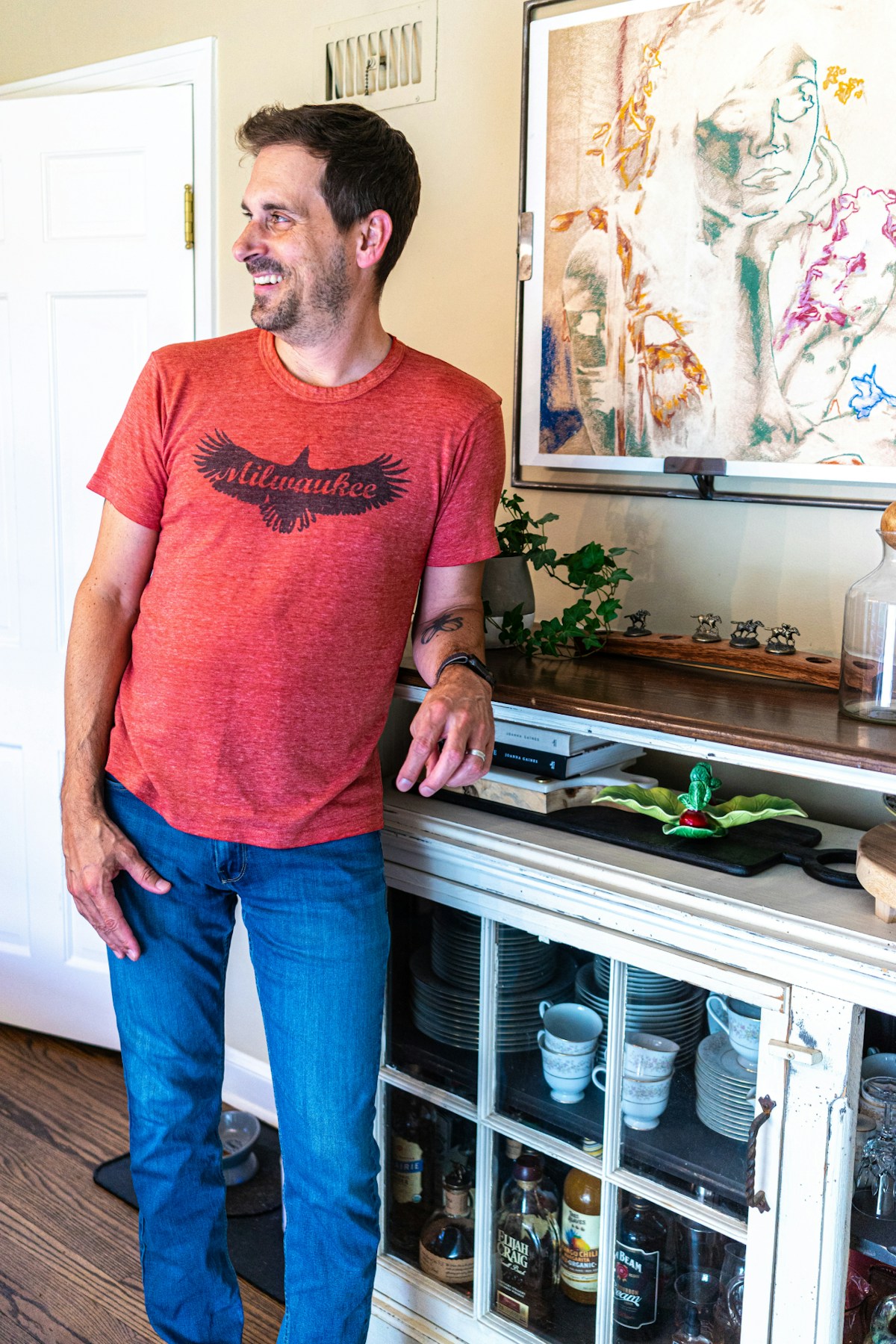
Steve spent his early professional years exercising his creative brain and developing the skills he would later need to excel in a corporate environment. As he shares, “I cut my teeth early on in my career at a small building design firm here in Milwaukee, partially because a lot of my friends that I've met at MIAD were industrial designers and sculptors. My dad's left brain really kicked in, which has always helped me with a systematic approach to my work, but I'm very loose in my approach at the same time.”
From there, Steve moved into a series of roles with Abbott Laboratories. Steve illustrates this experience, “I worked with many genuinely amazing people that I still have great relationships with. But, the most evocative part of the experience was that we worked in a basement—they kept the creatives 40 feet underground.”
He literally came from the basement of corporate America.
The subterranean working experience took its toll. As Steve explains it, “The windowless environment messed with my circadian rhythm and sapped my vitamin D. That was the toughest part in a way. You could have a tough work week in the winter and never see the light of day.”
Nat, on the other hand, embarked on a career in art therapy, intertwining her passion for creativity and human connection. She used artistic activities as a means to facilitate conversations and build teams within corporate environments, including Abbott.
Nat relates, “I would work with the management to create artistic activities as a springboard to deeper topics they needed to talk about. It really served a powerful purpose: to open up conversation and get people communicating and connecting in environments in which they otherwise felt there were barriers that needed spaces created for expression and growth.”
She continued, “People usually don't like the word ‘therapy,’ especially in corporate and scientific settings. However, when you called it something different, it helped allow people to process and talk through change and pain points within the organization or their team. You know, so yeah, a lot of origami birds flying around at the end. It was great.”
After rising through the ranks at Abbott, Steve became the Manager of Creative Services for the internal agency at AbbVie (A division spun off from Abbott).
While I don’t love the trope “all good things must come to an end,” it is undeniable that all things do eventually come to an end, as was the case for Steve’s experience at Abbot/AbbVie. He shares, “All of a sudden I'm out. Instead of jumping for something new, like the stories you hear from people all the time, if you want to be successful or whatever, you got to jump. Well, I was shocked, just off the cliff. And it was scary as hell, like, we were still single income for most of that time. We had just bought a new house within the last year and a half.”
While the change was shocking and came with its travails, it forced the jump to independent ventures.
Through her art therapy practice, she discovered her voice as an artist, slowly nurturing her illustrative and whimsical style. Nat's artistic journey was a parallel path to her work as an art therapist, a process of self-discovery and finding her creative identity. Nat notes that even though Steve and her are artists who are married to each other, collaboration isn’t part of the equation. “We tried to collaborate once, and it was frustrating—it was terrible.”
However, more important than collaborating to make art together, their relationship provides something much stronger and more foundational.
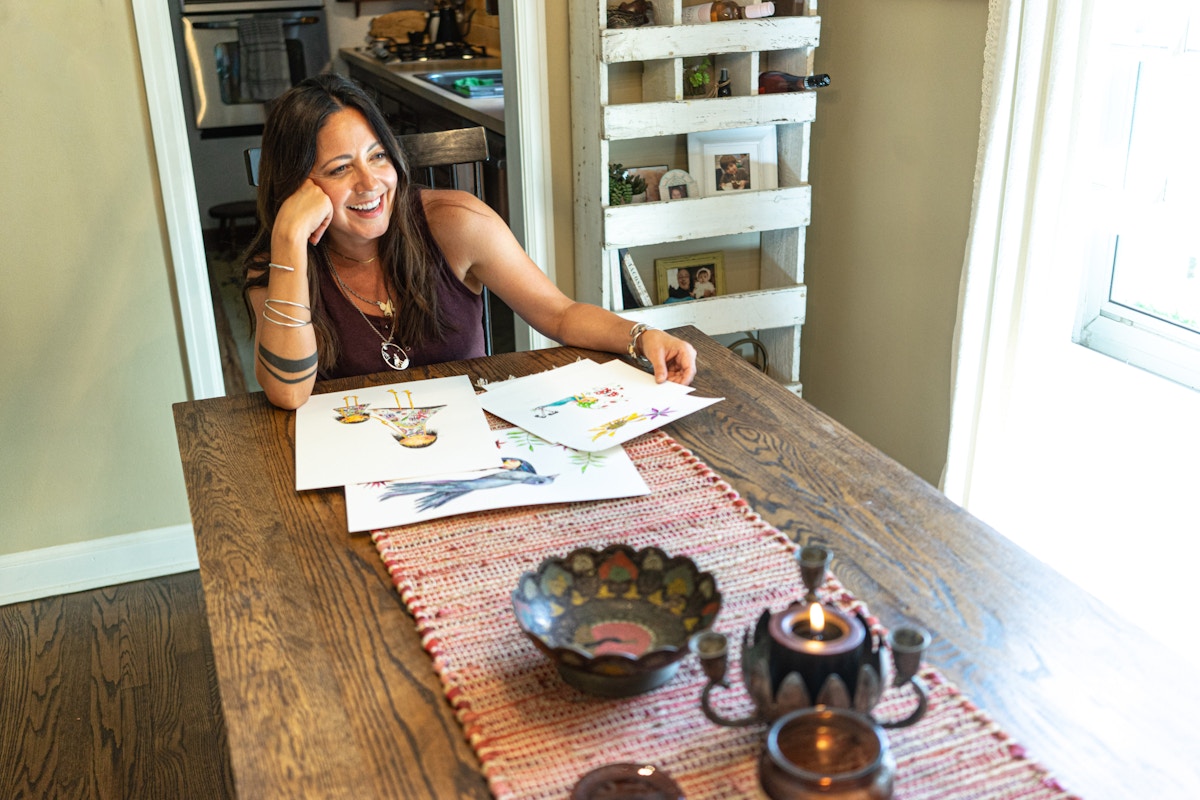
Walking the Razor’s Edge Between Self-Expression, Commodification, and Making It
While their art and creativity are a form of deeply personal self-expression, the Sorrentinos' relationship to the commodification of that art is complex.
Nat emphasizes the significance of the creative process itself, highlighting that “society often fixates on product, product, product while undervaluing the depth and value inherent in the act of creation. I find joy and fulfillment in engaging with the creative process, whether it leads to a tangible product or not.”
“In therapeutic arts there often is a beautiful product at the end, but just the engagement of the process, every step along the way has deep value. It's just engaging in the act that helps you transport or connect with a deeper part of the self. This process orientation is something we can understand.”
“Because at that core, we are literally all creatives.”
Steve expands this conversation, adding that even the choice to commodify one’s work or not is complex. “A lot of creatives don't know the monetary value of their work, especially the younger ones. Even after one makes the choice to sell their work, at the end of the day, value is in the eye of the beholder.”
He continues, “Even with the need to sell your work to make a living this can bring uncomfortable feelings. I sometimes struggle with selling work because putting a price on it inherently prices some people out of being able to participate.”
Both acknowledge that finding balance between selling art and keeping its intrinsic value to oneself as an artist can be challenging.
Nat eloquently illustrates this point, “You walk the razor's edge of moving a piece or hanging on to it because of what it’s worth to you. So you do this fine dance. Yeah, you walk the razor's edge of pricing it out to sell—or sharing it directly to share it with the world. Part of our motivation is creating to share, communicate, and connect. So you walk a fine line of releasing your work, and feeling good about releasing it, and what value you put on it. Maybe it goes down to the intent of how you release it and why.”
Nat relates that balancing the push and pull of releasing work, sharing it, and making a living off it is challenging. To strike this balance, she often keeps originals while also selling licensed reproductions in the form of greeting cards, magazines, and books. This juxtaposition creates a unique dynamic, where the original holds personal significance while the reproductions allow for wider distribution and impact.
I can relate to this juxtaposition. I often recount my personal experiences and interactions with the world in my articles. However, these stories are only replications of my recollections of events. Oftentimes, color is lost in my mind's eye to the full extent of the story due to the need to be both more relatable to a wider audience and also respect the personal boundaries of people that were part of an experience. So in a sense, I also keep the original piece to myself, and create reproductions for distribution.
MKE STEAMROLLER — Let Them Eat Equations!
What I find most endearing about Nat and Steve is that while we talked a lot about what art means to creators, it is evident that art to them is about a lot more than just themselves. Their approach uplifts a communal approach to something that is deeply personal and individualistic. This is exemplified through STEAMROLLER MKE.
In 2021, Steve and the House of RAD partnered with local artists, entrepreneurs, and businesses in Milwaukee to launch the inaugural event.
STEAMROLLER started as a way for Steve to stay connected with his art and community while juggling family and corporate responsibilities. The concept of steamroller printing—yes, they use an actual steamroller—was introduced to him during a printmaking convention, and he was captivated by its potential. Over time, the event has evolved into more than just a printmaking event. It became a passion project that allows Steve to collaborate with other creatives, build relationships, and support fellow artists.
This year, the event will include over 20 local and regional artists who create woodblock panels. Ink is applied to these panels, which are then used to print designs on a selected media using a steamroller, resulting in unique and visually stunning artwork. The original pieces are later auctioned off to support Anchor Press, Paper & Print (AP3), a 501(c)(3) charitable organization that is working to advance and grow the fine art printmaking tradition through education and studio access.
Steve also sees the event as an opportunity to bring together local artists, businesses, and educators to celebrate and amplify the arts as an important part of fostering personal and community growth. It’s a chance for community outreach to teach younger people and aspiring professionals about the career pathways in working with creative mediums.
My favorite insight into the event is the origin of its name. Steve reveals that “I still wrestle with the name of the event, STEAMROLLER (MKE). I sometimes wonder, is it too literal? Part of that struggle is because it's so much more than the steamroller printing. It's multi-arts and multi-generational. At the same time, putting the A in STEM because especially in Milwaukee, STEM is heavily emphasized to the exclusion of the arts.”
The event is an exemplar of community building through the support of local artists—but there’s also music, beer, and food (those are also important for community building)—so I will be there at this year’s event on August 5th—and everyone reading this article should come down and support the people who are making Milwaukee a more interesting, weirder place.
Art is More than Colors on a Canvas, It is the Color to Our Life
The inclusion of art alongside STEM in Steamroller MKE serves as a reminder that art is what adds color and vibrancy to life. Art encompasses anything from books, graffiti, music, and television (Young Sheldon excluded—sorry, not sorry). Art is what we consume when we want something interesting—something to challenge ourselves to become better forms of ourselves.
The science-minded corporate folks that Nat and Steve worked with who may have been uncomfortable with terms like art therapy, are artists too. After all, isn't science the art of exploration and discovery?
The Sorrentinos feel strongly about approaching art as an inclusive rather than exclusive form, as exemplified by their corporate experiences and ongoing community orientation.
Steve relates that while feeling drained in his final year at MIAD, “I was just ready to pull my eyes out. But one of the best conversations I had during that time was when I was working at a restaurant in Milwaukee’s 3rd Ward—working behind the bar. These two concrete guys came in for a beer. They started talking about the Adam and Eve piece on the wall, which happened to be mine. It was such a cool conversation with people that you wouldn't think would give two shits about the art on the wall, but it was a great conversation. I like taking art off of the pedestal. Just having it out there and engaging all parts of the community.”
Art in its highest form is universal in its truest sense—something that conveys a part of what it means to be human—taken off the figurative pedestal so anybody from beer-loving blue-collar workers to corporate shills to school teachers can appreciate it. While we don’t often have the words to explain it, something in us understands it. We form a sense of empathy with people we walk through this life with.
Nat relates another salient experience through her art therapy, working with the Hmong and Laotian populations. Through her work with people from these cultures, she realized that art needed to contain impermanence, reflecting the constant movement and fluid lifestyle of the individuals in these communities. The art they created served as a means of communication, storytelling, and preservation of culture and identity. For them, art took on the medium of food.
Having a friend whose family is from Laos, I can relate to this experience. Cooking is an art form—and a means of keeping everybody together through the shared preparation and enjoyment of food. It carries on their culture. Plus, it’s really damn good.
Nat's experiences demonstrate the power of art as a universal language that transcends cultural boundaries and provides a means of understanding and connecting with others.
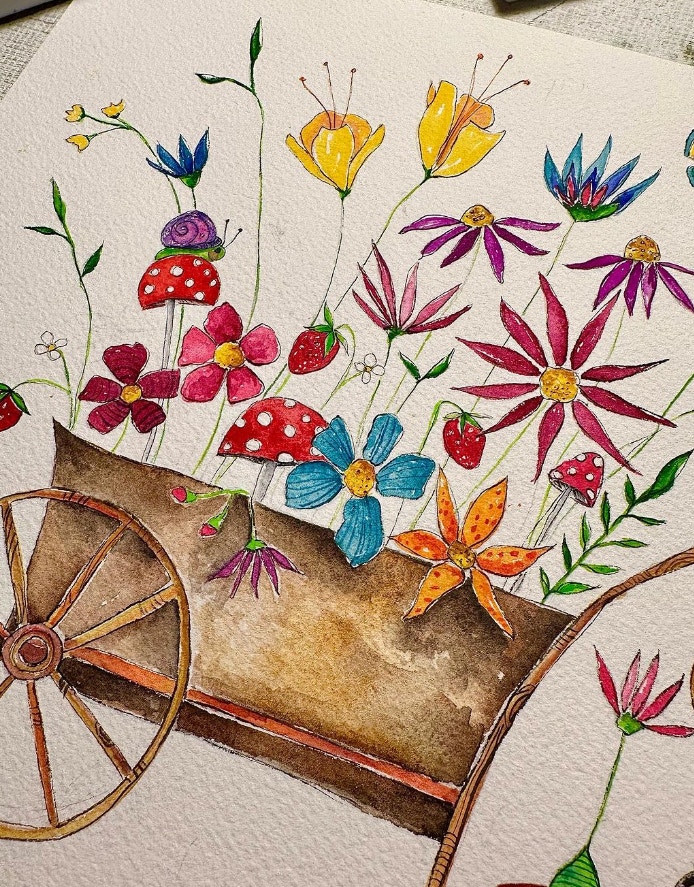
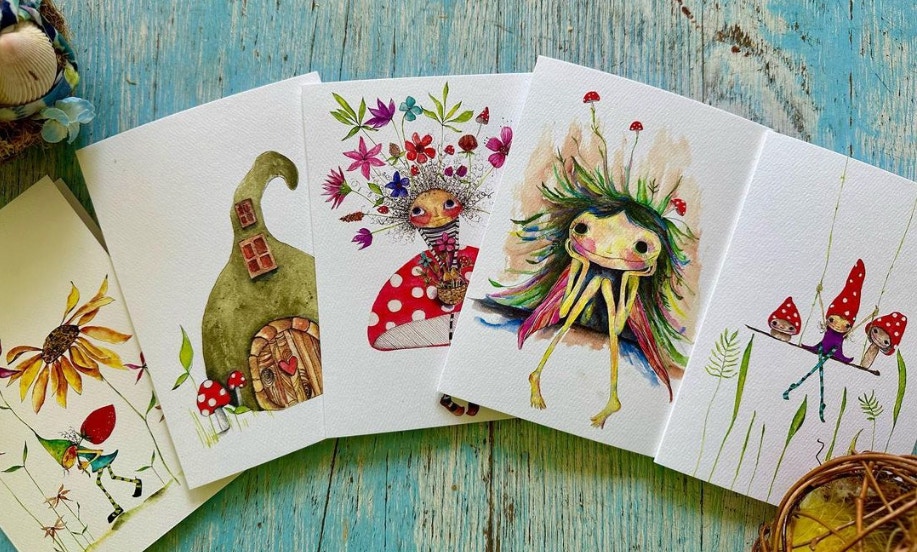
Milwaukee and the Arts—Summerfest, You May Have Heard of It
Despite sharing deep frustrations with our city, we all have optimism for what the future holds, as well as the rich history of Milwaukee as an arts hub that we have often overlooked.
While certain leaders and pockets of the Milwaukee ecosystem have recognized the importance of the arts, there is still work to be done in fully integrating and amplifying it within the city.
Steve shares in both frustration and hopefulness when it comes to Milwaukee as an arts city. On one hand, its opportunity has been underappreciated and underfunded by local leaders. On the other hand, he realizes that art has long been a powerful part of the public-facing persona of the city.
He realized that Summerfest—the world's largest music festival—shows Milwaukee’s economic and community-building opportunity that arose from something as simple as watching musicians sharing their art with the world.
We have a vibrant arts scene—sometimes we just need to look at our home with a fresh perspective. Steve exemplifies seeing Milwaukee through new eyes when it comes to opportunities for the arts community in the city—unless you’re going to try to tell me using a steamroller to bring together artists with their community in a shared celebration of the arts is a stale approach.
Steve also expresses the importance of businesses not only contributing financially to arts events but also actively participating and getting involved. He shares, “I am a closeted optimist, and I want businesses to ante up and invest in the arts and contribute to events like STEAMROLLER (MKE). But also, come get your hands dirty—truly be a participant. It’s great if you write a check or vote for arts funding, but it’s even better if you are right there with us. Come show up to the events, be part of the community.”
He believes that businesses should recognize the value of creativity in problem-solving and innovation, both within the corporate setting and the community at large.
Public arts and culture drive us forward and bring us together as a community. In these times that feel so unprecedented and socially shattered, it's overdue for Wisconsin to embrace the power of arts to bring communities together and build empathy. By investing in the arts—not just through funding but also through social support and appreciation—cities can foster a thriving ecosystem that attracts visitors, boosts local businesses, and enhances our overall quality of life.
To some extent, I think our leaders understand this. I think just about every tourism promotional material for Milwaukee features the iconic Milwaukee Art Museum designed by the Spanish Architect Santiago Calatrava. But tourism campaigns and arts museums are far from enough.
One day while traveling through a neighborhood on the North Side of Milwaukee with a friend, we crossed a crumbling, gray road, overpasses, and dilapidated buildings—devoid of any vibrancy on the surface on one side, and vibrant green parks and plantlife, ornate architecture, and community spaces on the other side. As we passed, I remarked, “We must have passed into a white neighborhood.”
My friend had always believed in these disparities, but passing across the street, they had seen it, the generations of public disinvestment and discrimination—and it was striking. And that’s also what art can do—present things in a new way to change our perspectives on life.
I don’t want to imply that historically redlined neighborhoods are desolate wastelands devoid of hope and artistic expression. On the contrary, there is artistic expression throughout, from graffiti to sculptures made from repurposed materials and displays of pride and defiance in the face of systemic racial oppression. But if we actually want to be a city of true artistic opportunity and expression—it can’t just be funding for predominantly white schools, building sculptures for places affluent people like to visit, or even funding art museums. None of these things are bad in themselves—but both sides of the street need to be vibrant and green. There needs to be public investment and support for all creatives in this city.
Nat and Steve’s dedication to utilizing art as a tool for personal and community growth is a reflection of the transformative power of creativity across professional contexts, communities, cultures, and more. And maybe it’s just me looking at my city with rose-colored glasses—or maybe Pilsner-colored ones if we’re being honest about what Milwaukee is really about—but it does feel like we are on the cusp of a great rejuvenation as a city.
Maybe a cold dose of that reality is Milwaukee is a climate resilience haven, and we’re due to have a flock of incoming residents and businesses—regardless of what we do—fleeing the sun-scorched Western Plains, consumed in fiery blazes, but I think they’ll like what they see when they get here.
And so do Nat and Steve—poignantly closing the interview, saying “We do love our city. That's the biggest thing. It's awesome.”
